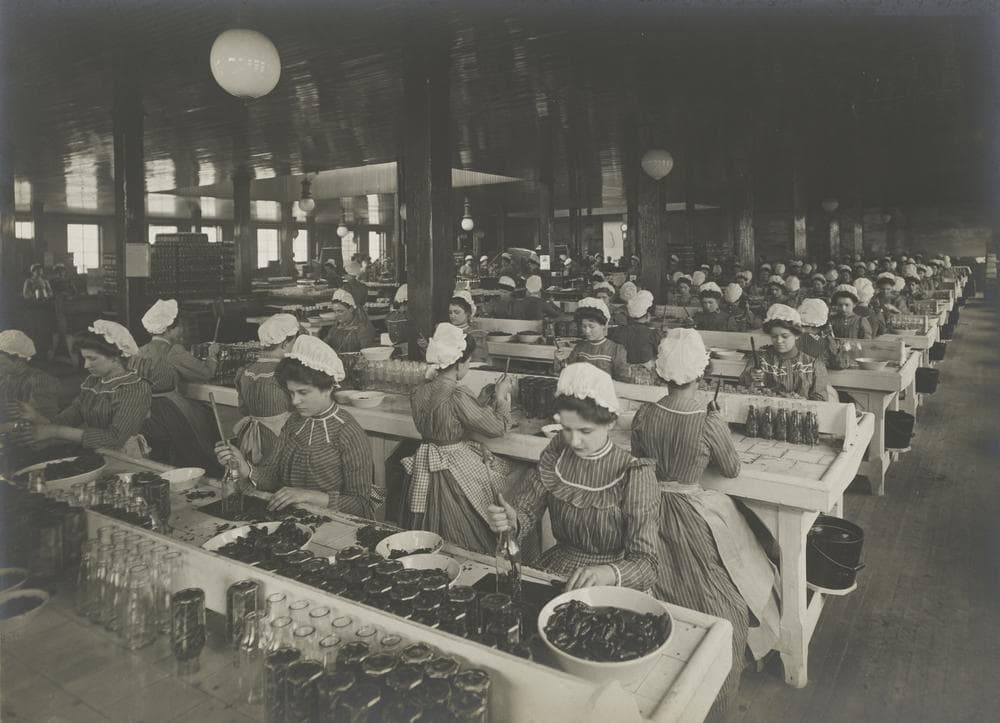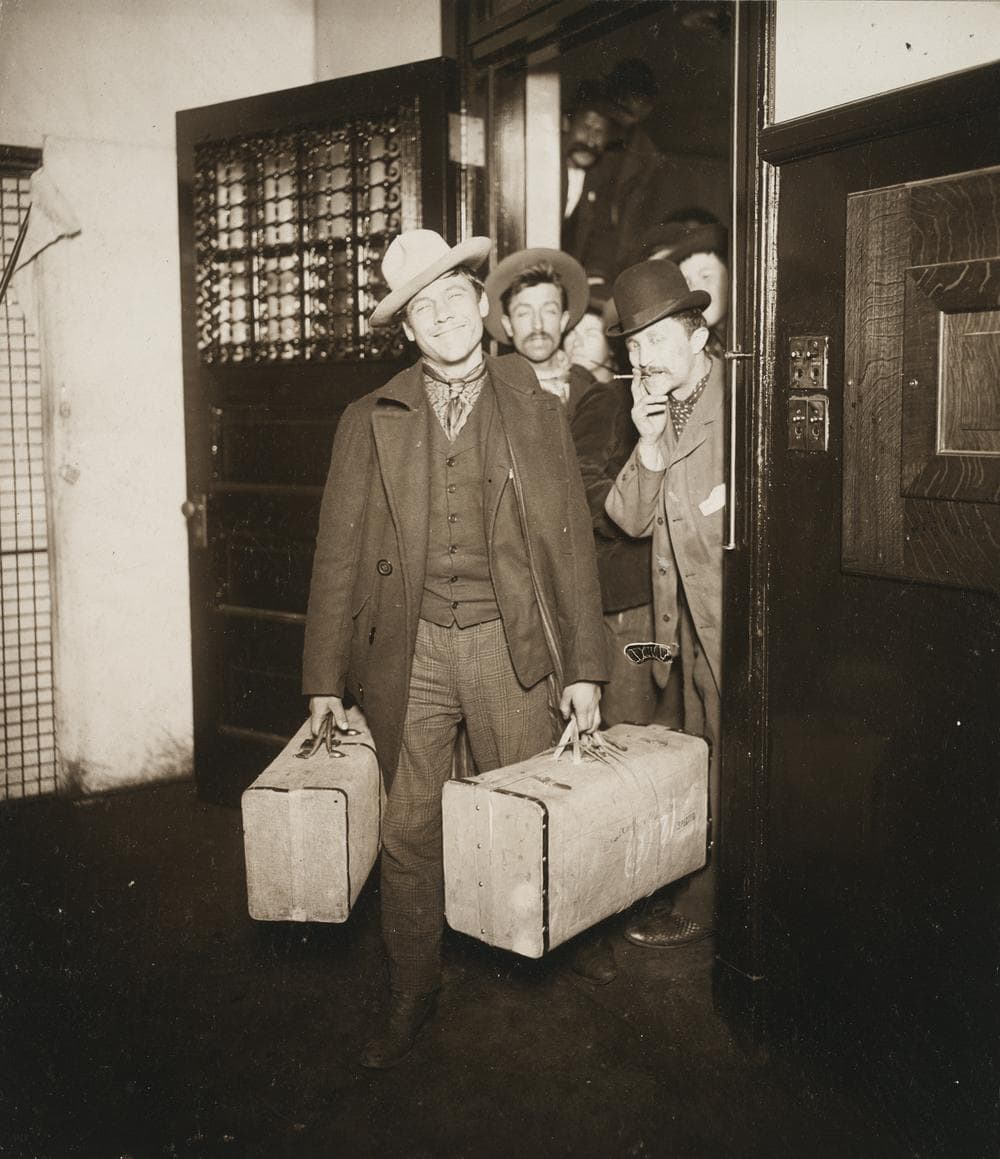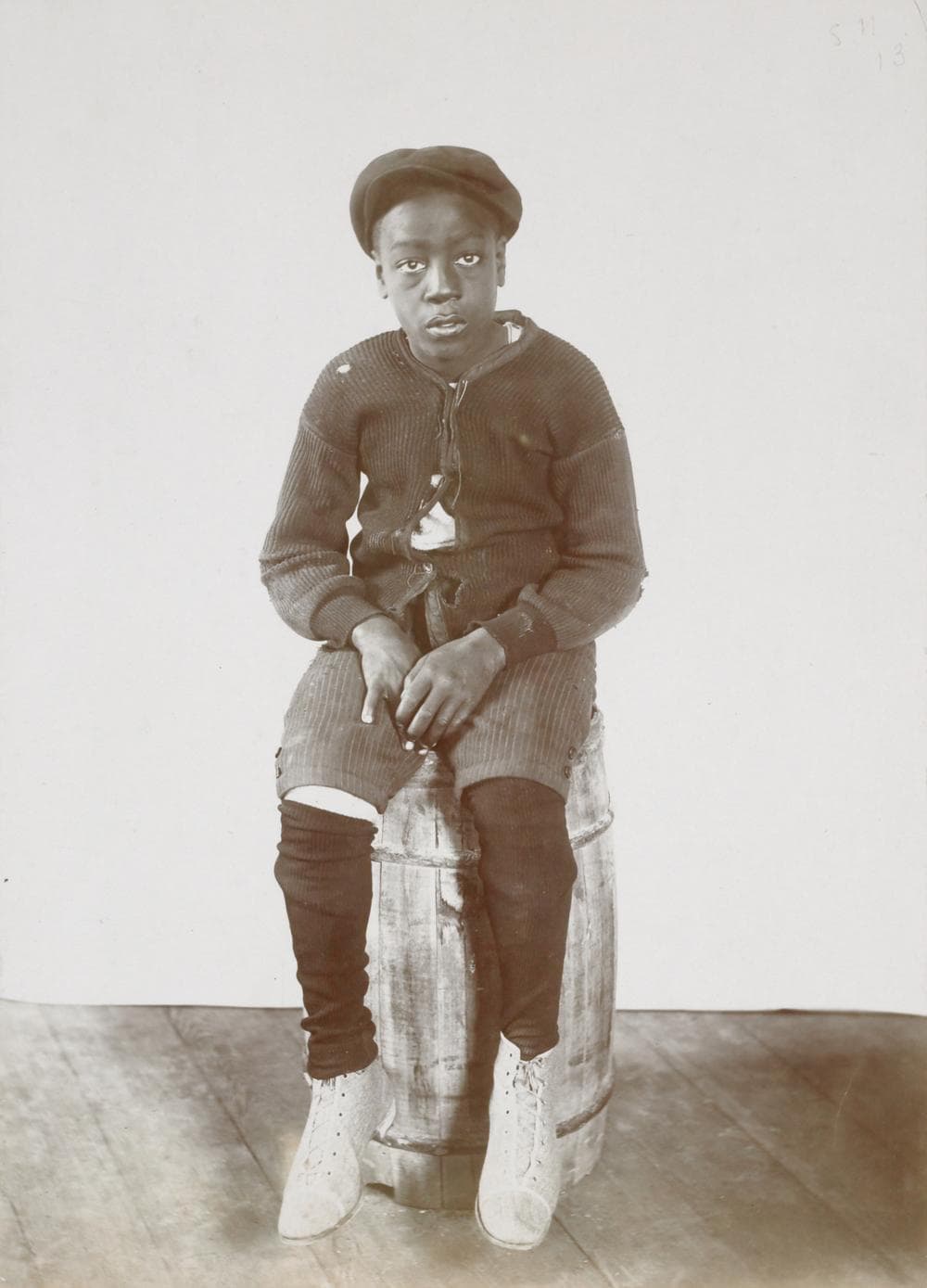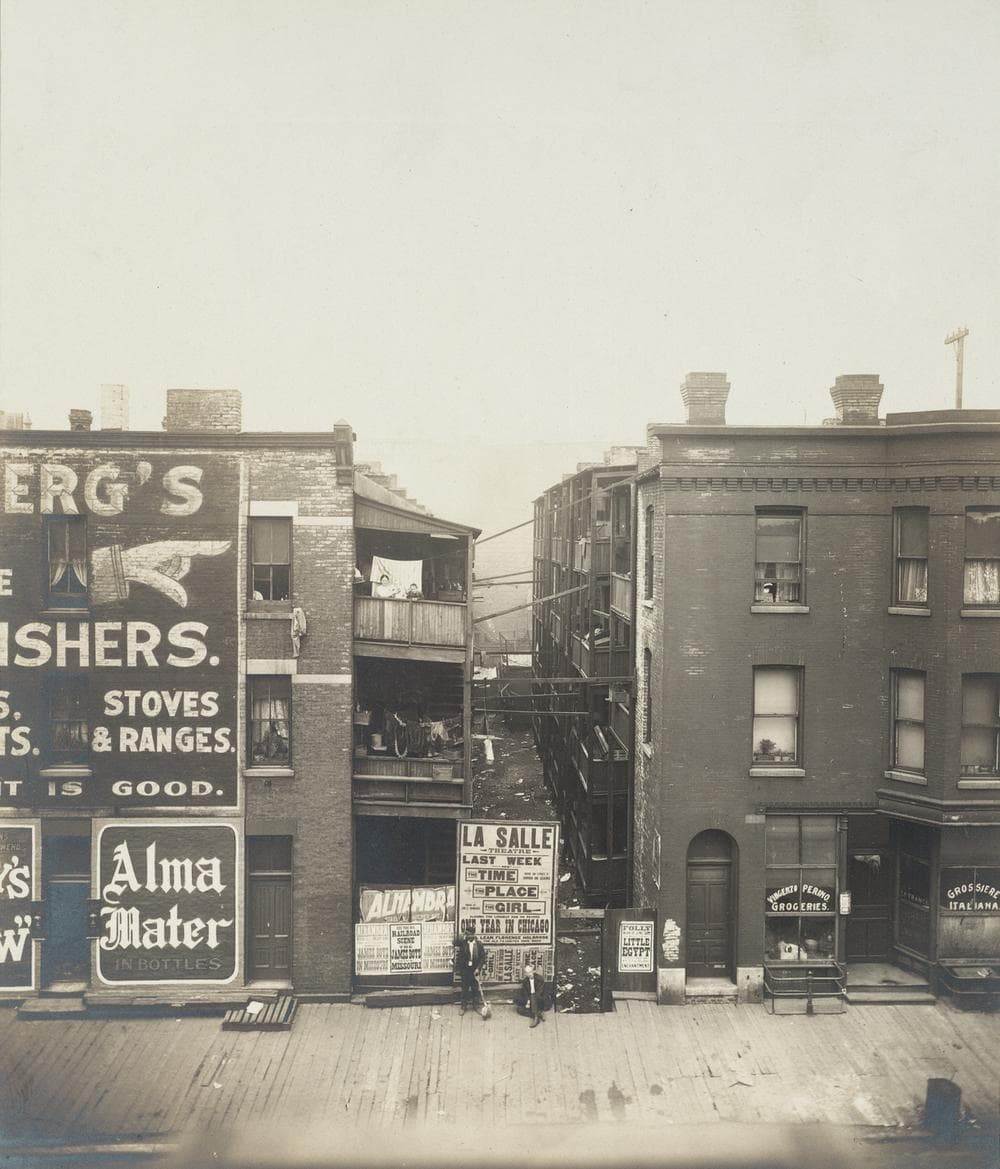Advertisement
Teaching The Privileged About The Poor At Harvard's Social Museum
Resume
Roughly one in six Americans — 15 percent of the total population — lives below the poverty line. At the same time, incomes continue to fall and income inequality grow.
But this isn't the first time our nation has faced such a gap between the privileged and the poor. A new book of photographs brings back to life the enduring struggle.
History Repeats Itself
Backtrack to 1900, when Harvard professor Francis Greenwood Peabody wrote:
Behind all the extraordinary achievements of modern civilization — its transformation of business methods, its miracles of scientific discovery, its mighty combination of political forces, there lies...a burdening sense of mal-adjustment which creates what we call the social question.

"Peabody wanted to...bring his students closer to those considered to be of the other half," explained Michelle Lamuniere, assistant curator of photography at the Harvard Art Museums. As the Plummer professor of Christian morals, Peabody felt it was his duty to bring "social ethics" — rooted in his Unitarian faith — to his privileged Harvard students.
So in 1907, Peabody decided to open the Social Museum on Harvard's campus. It showcased photographs and artifacts from Progressive Era social programs designed to improve the lives of the poor.
"Peabody is an interesting character because he straddles two different approaches to social reform," Lamuniere explained.
"In the 19th century, values were pretty conservative, and people wanted to emphasize character building. It was believed that people who were in poverty or suffering from poverty were morally weak."
That changed with the turn of the century, with blame shifting from the individual level to the societal level.
"In the early 20th century, as people were embracing more of a scientific method," Lamuniere said, "They came to understand that there were environmental concerns like bad sanitation, poor housing, and lack of employment that contributed those who found themselves in poverty."
Looking Into The Eyes Of The Other Half

Though the Harvard's Social Museum closed in 1931, the new book, "Instituting Reform: The Social Museum at Harvard University" — co-edited by Lamuniere — displays many of the photographs from the collection of the museum.
"The images themselves reflect all kinds of people, from children to elderly people living in a charity house, to immigrants arriving at Ellis island, to students in reform schools," said Lamuniere.
Many of the photographs were culled from what were called "social economy" exhibitions at the various World's Fairs of the late 19th and early 20th centuries. These exhibitions educated the public on the work being done to alleviate the plight of the poor.
The Social Museum's photographs were supposed to serve as evidence and data, but they did more. Lamuniere described one photograph in particular, in which a young, African American boy sits on a barrel against a white backdrop.
"He's presented as a sort of scientific specimen...But at the same time, the boy is looking out at the viewer, and you're supposed to also identify with him and the hardship in his life. The photograph really evokes sympathy and is intended to convince Peabody's students of their moral obligation to defeat poverty," she said.
Peabody's Mission Lives On

Just as Peabody had hoped, many of his students went on to be leaders in social services. Among them, Lamuniere listed James Ford, who became a housing expert and a leading authority on slum clearance. There was also Homer Folks, co-founder of the National Child Labor Committee.
"He definitely wanted his students to be motivated to recognize what the world around them was going through and to move forward in their lives with a sense of social responsibility...he wanted to motivate them to do their part in effecting change."
More:
This segment aired on September 18, 2012.